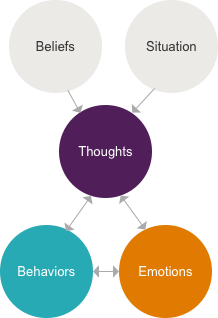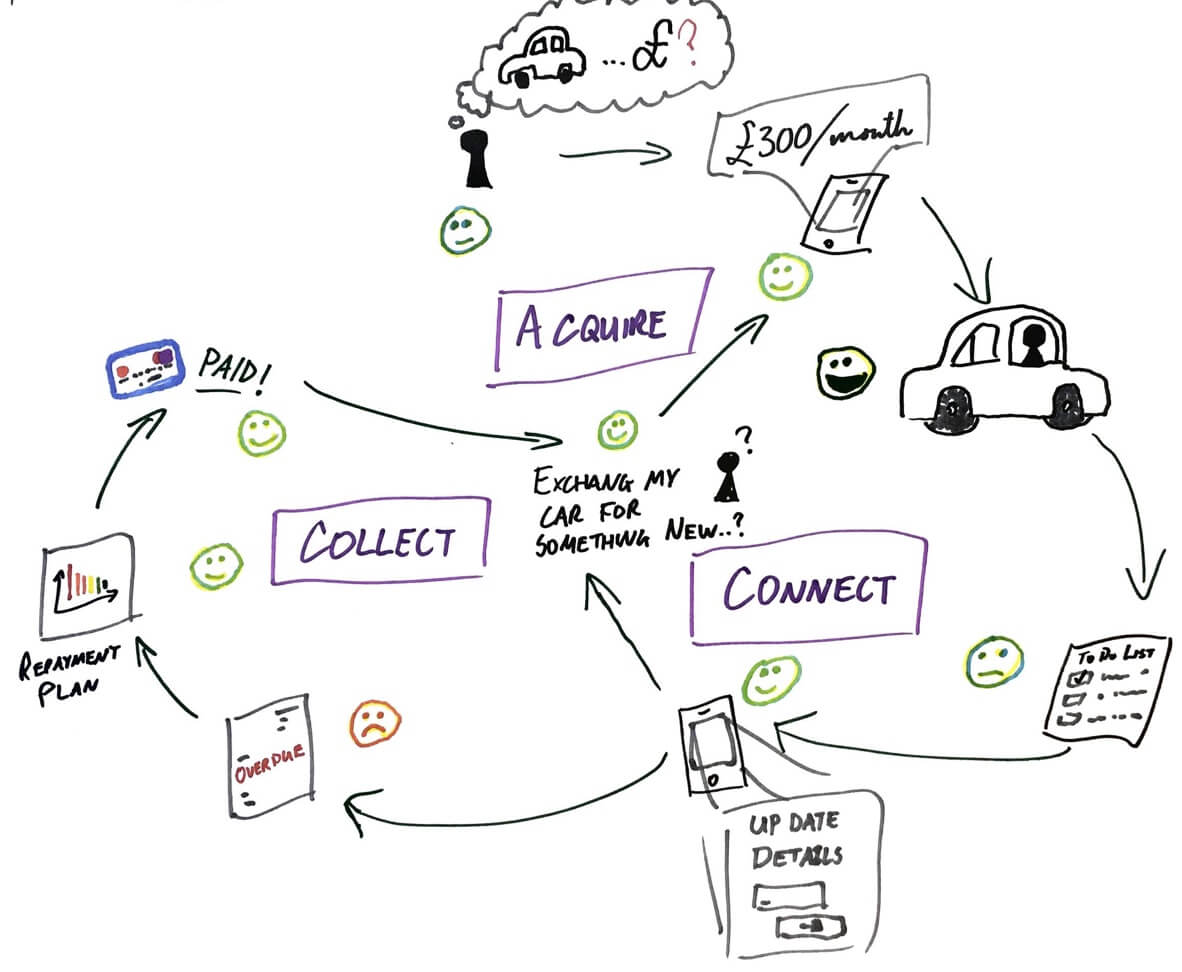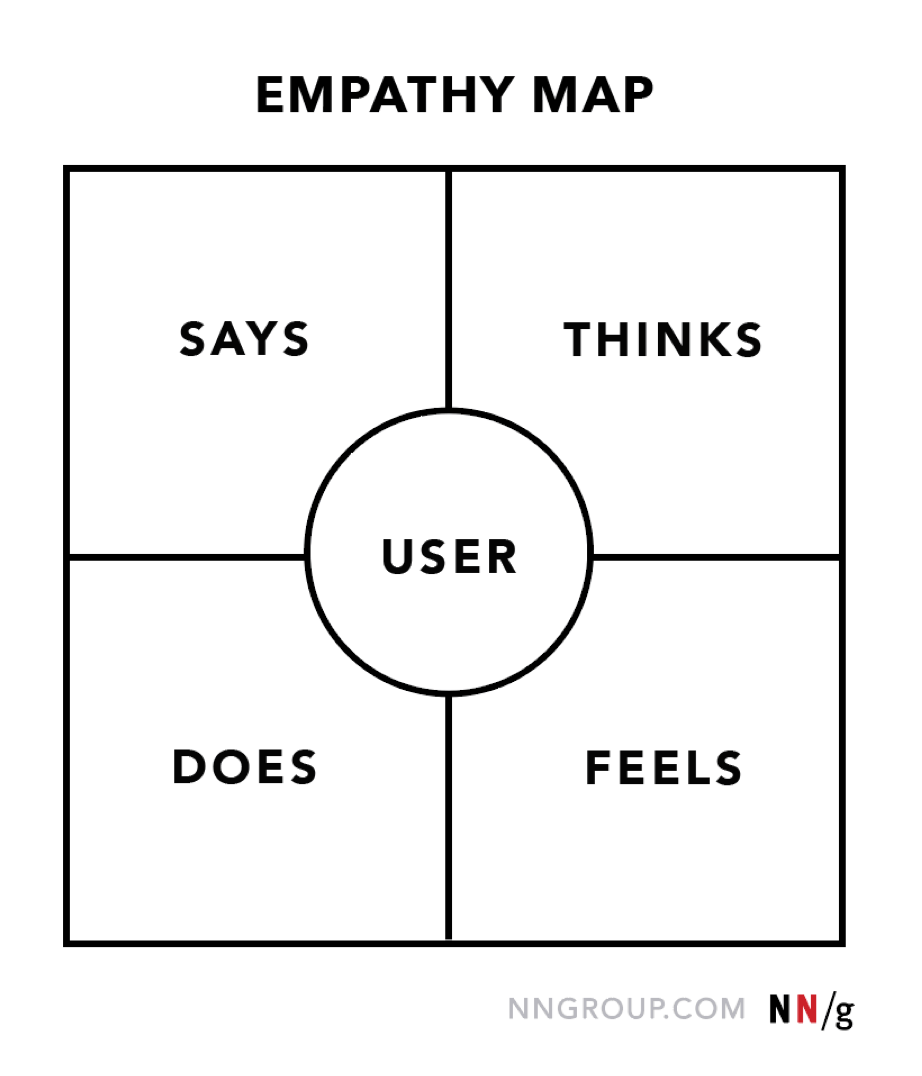The term ‘user experience design’, or UX design for short, suggests that experiences can be designed. Experiences are different for every person depending on beliefs, mood, our personal circumstances, and the situation we currently find ourselves in. This can be summarized in the cognitive model:
 Beliefs are long held since childhood and form your view of the world. These include positive and negative beliefs such as “The world is an unsafe place”, or “I am capable”.
Beliefs are long held since childhood and form your view of the world. These include positive and negative beliefs such as “The world is an unsafe place”, or “I am capable”.
The situation that someone is in will also affect things. The main situation in this context is a point in the user journey they are at, but also includes external factors such as location, weather, time, and personal factors such as mood, sleep levels and health.
From these factors, people have thoughts. These thoughts often result in an emotional response. These emotions can be negative feelings such as fear and anger, or positive emotions such as happiness and delight. Based on the emotional response of the body, people will then act in a certain way, also called a behavior. This behavior may then lead to more thoughts and emotions.
Everyone will therefore react differently to a situation, as everyone’s background is different, and no situation is exactly the same. There is no typical user. So rather than design a set experience for every user, we have to design an experience for a number of different possible emotional states.
Imagine a digital collections process, where people might enter into the process in a number of different negative states such as anxiety, anger, or nonchalance. Our desired emotional state will be to make someone feel empowered, secure, and safe. There are various tools we can use in UX to help us to truly step into the shoes of our users.
User observation
Observing people helps us to understand how they think, feel, and act in different situations. We’ve spent time listening into calls at a call center to understand how the call center agent and the customer are feeling at different points in the experience, and we’ve watched customers use our products. It’s best to do this in as natural an environment as possible, as a laboratory setting can affect the way someone may behave compared with when they’re in a more comfortable, familiar setting.
Empathy maps
Loosely based on the cognitive model above, an empathy map helps to form an emotional understanding of a person. An empathy map is useful to understand a general empathetic view of a person, or to document a person’s emotional overview at a given part of the journey.
Experience maps
An experience map helps to map emotion over time. It’s important to map the journey for more than one user, as different people may respond completely differently in some situations. You don’t need to make these very complex. In this very early sketch of a user journey, we used simple smiley/frown representations of how the customer may be feeling at certain points in the journey. This helps us to identify the pain points very quickly.

Getting in touch with the emotions of the people who are using your products is key to designing products that are empathetic to their needs. Experience cannot be designed, but products can be designed in order to help manage the experience towards a more positive emotion. Learning how to listen and connect with the emotions of your customers will nurture a much deeper connection to your products.















